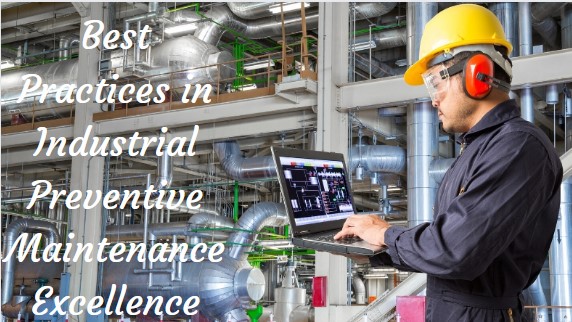
Proven Practices for Industrial Preventive Maintenance Excellence
Pratik Lohiya |
17 Feb 2024 |
04:35 AM
- Understanding the Significance of Industrial Preventive Maintenance programs
- What is Industrial Preventive Maintenance?
- How to Apply Preventive Maintenance
- Utilizing Technology and Tools for Effective Implementation
- Benefits of Preventive Maintenance programs
- Tips for a Successful Industrial Preventive Maintenance Program
- Importance of Focused Oversight and Asset Prioritization
- Elevating Your Preventive Maintenance Strategy
- Evaluating the Effectiveness of Each Strategy
- Which Maintenance Strategy is Best?
- How to Implement Maintenance Best Practices for Your Facilities
- Conclusion
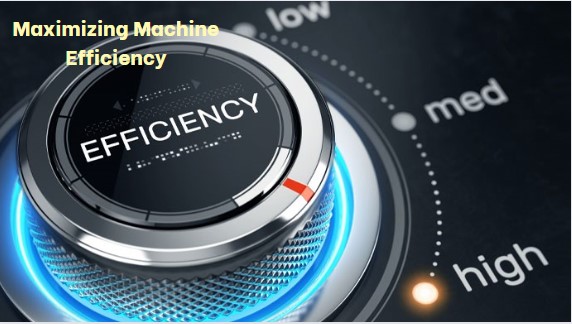
Maximizing Machine Efficiency with Proactive Maintenance
Pratik Lohiya 22 Jan 2024 | 17:08 PMExplore the future of industrial efficiency with our guide on proactive maintenance, uncovering strategies to maximize equipment lifespan, minimize downtime, and propel your organization towards sustained success in an evolving landscape....
Preventive maintenance plays a vital role in ensuring seamless functionality and longevity of critical assets. This proactive approach involves scheduled inspections, repairs, and upkeep measures aimed at averting potential breakdowns and optimizing performance. Understanding the importance of industrial preventive maintenance is paramount for businesses striving to maintain operational continuity and minimize costly disruptions.
Understanding the Significance of Industrial Preventive Maintenance programs
Industrial preventive maintenance entails preemptive actions taken to forestall unexpected equipment failures and mitigate downtime. By systematically addressing potential issues before they escalate, maintenance managers can avoid costly repairs, production delays, and safety hazards. Moreover, preventive maintenance fosters a culture of reliability and efficiency within the workplace, instilling confidence in both employees and stakeholders.
Overview of Preventive Maintenance Approaches
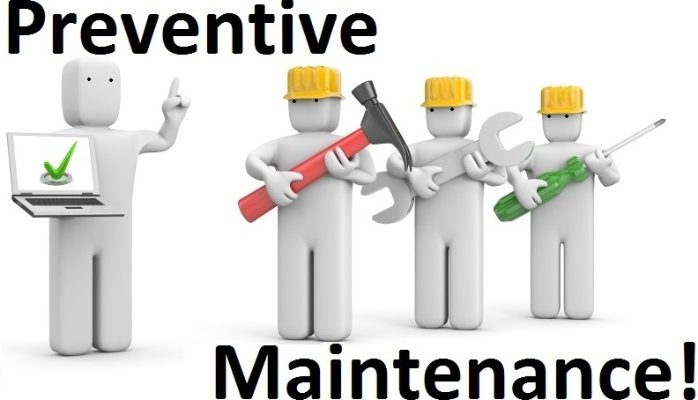
Preventive maintenance encompasses a spectrum of approaches tailored to suit diverse operational needs. At the heart of these strategies lies the utilization of a CMMS, a centralized platform facilitating the planning, execution, and tracking of maintenance activities. From establishing comprehensive preventive maintenance programs to delineating specific tasks and schedules, these approaches aim to optimize equipment uptime, minimize costs, and enhance overall productivity. Effective implementation of preventive maintenance strategies hinges on meticulous planning, adherence to maintenance procedures, and continuous evaluation to refine and improve existing programs.
What is Industrial Preventive Maintenance?
Industrial preventive maintenance is a proactive approach employed by organizations to anticipate and address potential equipment failures before they occur. This systematic practice involves regularly scheduled inspections, repairs, and servicing to keep machinery and assets in optimal condition. Unlike reactive maintenance, which involves fixing problems after they arise, preventive maintenance aims to prevent breakdowns, minimize downtime, and extend the lifespan of equipment.
Defining Industrial Preventive Maintenance programs

An industrial preventive maintenance program is a structured framework designed to manage and execute preventive maintenance tasks efficiently. Central to these programs is the utilization of a CMMS, which acts as a centralized hub for organizing maintenance activities, scheduling tasks, and tracking equipment performance metrics. By establishing preventive maintenance programs, organizations can streamline their maintenance efforts, reduce unplanned downtime, and enhance overall operational efficiency.
Exploring Its Role in Ensuring Operational Continuity
Industrial preventive maintenance plays a crucial role in ensuring operational continuity and reliability within industrial settings. By identifying and addressing potential issues proactively, organizations can minimize the risk of equipment downtime and production interruptions. This not only safeguards against costly repairs and revenue losses but also enhances workplace safety and employee morale. Additionally, preventive maintenance programs contribute to cost savings by optimizing equipment performance, reducing energy consumption, and extending the useful life of assets. Overall, industrial preventive maintenance is a strategic investment that fosters a culture of reliability, efficiency, and sustainability in industrial operations.
How to Apply Preventive Maintenance
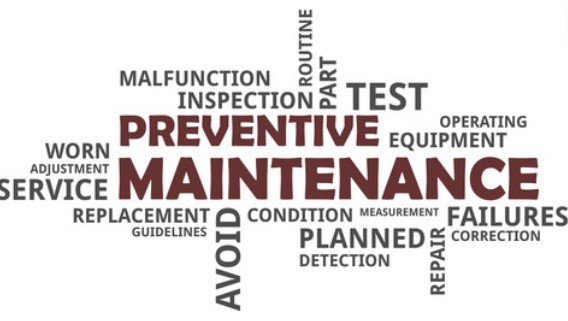
Step-by-Step Guide to Implementing Preventive Maintenance Strategies
Implementing preventive maintenance strategies requires a systematic approach and careful consideration of various factors. Here's a step-by-step guide to help organizations effectively apply preventive maintenance:
Step 1: Establish Clear Objectives Define the goals and objectives of your preventive maintenance program. Identify key performance indicators (KPIs) to measure success, such as reducing equipment downtime, minimizing maintenance costs, and improving overall equipment effectiveness.
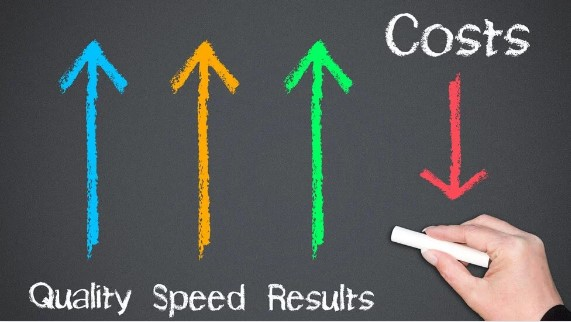
Step 2: Utilize a Computerized Maintenance Management System (CMMS) Implement a CMMS to streamline maintenance processes, track assets, and schedule preventive maintenance tasks. A CMMS provides a centralized platform for managing maintenance activities, generating work orders, and tracking maintenance history.
Step 3: Conduct Equipment Assessments Perform comprehensive assessments of equipment to identify potential failure points and maintenance requirements. This may involve conducting equipment inspections, analyzing historical data, and performing diagnostic tests.
Step 4: Develop Maintenance Schedules Create maintenance schedules based on equipment criticality, manufacturer recommendations, and historical performance data. Develop preventive maintenance plans that outline specific tasks, frequencies, and responsible personnel.
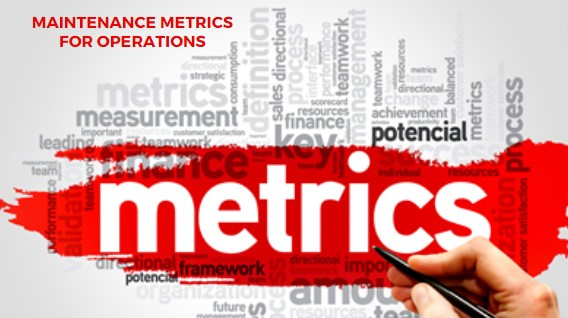
Step 5: Execute Preventive Maintenance Tasks Implement preventive maintenance tasks according to the established schedule. Ensure that maintenance activities are carried out by trained personnel using appropriate tools and techniques.
Step 6: Monitor and Evaluate Performance Regularly monitor the performance of preventive maintenance activities and track key metrics such as equipment uptime, maintenance costs, and reliability. Evaluate the effectiveness of the preventive maintenance program and make adjustments as needed to optimize performance.
Utilizing Technology and Tools for Effective Implementation

To effectively implement preventive maintenance strategies, organizations can leverage technology and tools to streamline processes and enhance efficiency. Utilizing a computerized maintenance management system (CMMS) is crucial for managing preventive maintenance activities. A CMMS provides a centralized platform for scheduling maintenance tasks, tracking equipment history, and generating maintenance reports.
Additionally, predictive maintenance technologies, such as sensors and condition monitoring systems, can help organizations identify potential equipment failures before they occur, allowing for timely interventions and proactive maintenance actions. By leveraging technology and tools, organizations can optimize preventive maintenance plan, reduce equipment downtime, and improve overall operational efficiency.
Benefits of Preventive Maintenance programs
Implementing preventive maintenance programs offers numerous advantages to industrial facilities, enabling them to operate more efficiently and effectively. Let's delve into the key benefits of adopting a proactive maintenance approach:
Reduced Equipment Downtime:
By addressing potential issues before they escalate, preventive maintenance programs help minimize unexpected breakdowns and equipment downtime. This ensures continuous operation of critical assets, maximizing productivity and minimizing disruptions to production schedules.
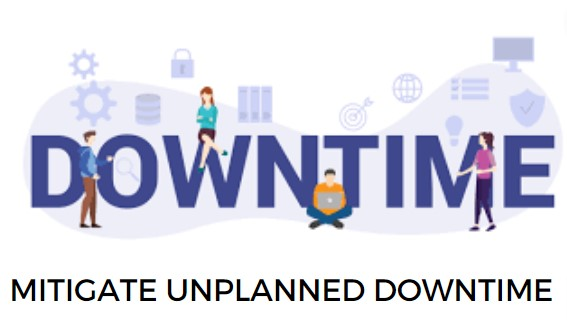
Cost Savings:
Preventive maintenance schedule helps organizations save money by reducing the need for costly emergency repairs and replacement of equipment. By conducting regular inspections and addressing minor issues early on, organizations can extend the lifespan of their assets and avoid expensive repairs or replacements.
Increased Equipment Reliability:
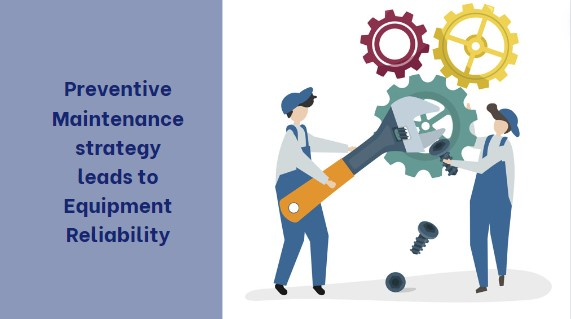
Regular maintenance tasks such as lubrication, cleaning, and calibration help maintain equipment in optimal condition, improving reliability and performance. This leads to fewer breakdowns, less frequent repairs, and improved overall equipment effectiveness.
Enhanced Safety:
Proper maintenance of equipment ensures that it operates safely, reducing the risk of accidents and injuries in the workplace. By identifying and addressing potential safety hazards during routine inspections, preventive maintenance programs contribute to a safer working environment for employees.
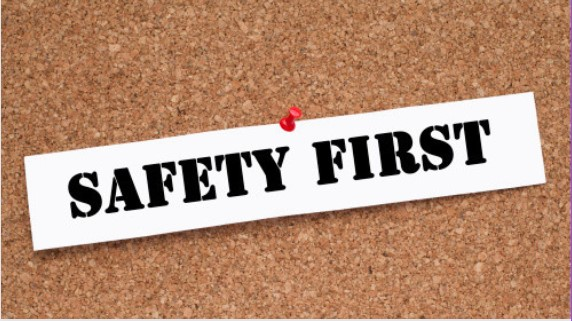
Improved Asset Management:
By tracking maintenance activities and equipment performance through a computerized maintenance management system (CMMS), organizations can gain valuable insights into their assets' health and condition. This allows for better decision-making regarding repair, replacement, and asset allocation, ultimately optimizing asset management processes.
Tips for a Successful Industrial Preventive Maintenance Program
Creating and maintaining an effective preventive maintenance program is essential for industrial facilities to ensure smooth operations and minimize downtime.
Utilizing the Right Technology for Enhanced Maintenance Operations
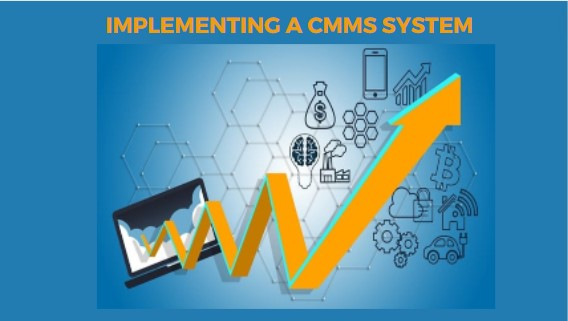
A CMMS enables organizations to schedule preventive maintenance operations, track equipment history, and generate maintenance reports efficiently. Additionally, leveraging predictive maintenance technologies such as sensors and data analytics can help anticipate equipment failures and prevent unexpected downtime.
Strategies for Effective Team Training and Skill Development

Investing in comprehensive training programs for maintenance teams is essential to ensure that they have the necessary skills and knowledge to perform preventive maintenance activities effectively. Training should cover equipment operation, maintenance procedures, safety protocols, and the use of maintenance tools and technologies.
Establishing Evaluation and Improvement Processes for Continuous Enhancement
Regularly evaluating the performance of the preventive maintenance plan is essential for identifying areas for improvement and implementing corrective actions. Organizations should establish key performance indicators (KPIs) to measure the effectiveness of their maintenance program and use feedback from maintenance teams and equipment performance data to drive continuous improvement.
Importance of Focused Oversight and Asset Prioritization

Assigning dedicated personnel to oversee the preventive maintenance program and prioritize maintenance activities based on equipment criticality and operational needs is crucial. Focused oversight ensures that preventive maintenance checklist is aligned with organizational goals and that resources are allocated effectively to maximize the impact of maintenance activities.
Standardizing Maintenance Procedures for Consistency and Efficiency
Developing standardized maintenance procedures ensures consistency in preventive maintenance schedule across different equipment and facilities. Standardization simplifies training, reduces the risk of errors, and improves the efficiency of maintenance operations.
Enhancing Communication and Coordination Among Maintenance Teams

Effective communication and coordination among maintenance teams are essential for ensuring that preventive maintenance tasks are carried out efficiently and that potential issues are addressed promptly. Regular meetings, clear communication channels, and collaboration tools can facilitate communication and foster a culture of teamwork and accountability within the maintenance department.
Elevating Your Preventive Maintenance Strategy
Understanding Different Maintenance Strategies: Reactive, Preventive, Conditions-Based, Predictive, and Prescriptive
Reactive Maintenance: This strategy involves addressing equipment failures as they occur, often leading to costly downtime and repairs. While reactive maintenance is unavoidable in certain situations, relying solely on this approach can result in inefficiencies and decreased equipment reliability.
Preventive Maintenance: The cornerstone of proactive maintenance, preventive maintenance involves performing routine inspections and tasks at scheduled intervals to prevent equipment failures. By addressing issues before they escalate, preventive maintenance helps minimize downtime and prolong equipment lifespan.
Conditions-Based Maintenance (CBM): CBM focuses on monitoring the condition of equipment through sensors and predictive analytics to anticipate maintenance needs. By analyzing data on equipment performance and health indicators, organizations can schedule maintenance operations based on actual equipment condition, optimizing resource allocation and minimizing unnecessary maintenance.
Predictive Maintenance: Similar to CBM, predictive maintenance uses data analysis and predictive algorithms to forecast equipment failures before they occur. By identifying early warning signs and patterns indicative of impending failures, organizations can take proactive measures to prevent downtime and costly repairs.

Prescriptive Maintenance: The most advanced form of maintenance, prescriptive maintenance combines data analytics with machine learning algorithms to not only predict failures but also prescribe the most effective course of action. This strategy empowers organizations to optimize maintenance activities, maximize equipment uptime, and minimize costs.
Evaluating the Effectiveness of Each Strategy
When evaluating the effectiveness of different maintenance strategies, it's essential to consider factors such as equipment reliability, downtime reduction, cost savings, and overall operational efficiency. By analyzing key performance indicators (KPIs) and comparing the outcomes of each strategy, organizations can determine the most suitable approach for their unique requirements. Additionally, continuous monitoring and feedback mechanisms allow for ongoing refinement and improvement of the preventive maintenance strategy, ensuring long-term success and sustainability.
Which Maintenance Strategy is Best?
Determining the most suitable maintenance strategy for your organization requires careful consideration of various factors, including equipment criticality, operational requirements, and resource constraints. Let's conduct a comparative analysis of different maintenance strategies to help you identify the best approach for your specific situation:
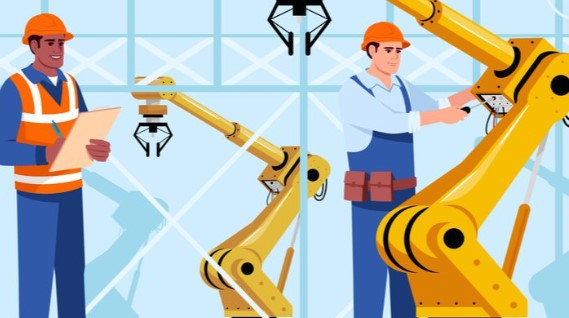
Comparative Analysis of Different Maintenance Strategies to Determine the Most Suitable Approach for Various Situations
Reactive maintenance is best suited for non-critical assets where operational disruptions have minimal impact or when immediate repairs are both feasible and cost-effective. This approach requires minimal upfront investment, making it suitable for organizations with limited resources. However, it carries inherent risks, including potentially costly downtime, decreased equipment reliability, and an elevated risk of unexpected failures. While reactive maintenance can offer short-term solutions, its reliance on addressing issues as they arise may lead to long-term inefficiencies and increased maintenance costs.
Preventive maintenance is most effective for critical assets where minimizing downtime is paramount or for equipment exhibiting predictable failure patterns. By proactively scheduling maintenance tasks, organizations can prevent unexpected failures, minimize downtime, and extend the overall lifespan of their equipment. However, this approach necessitates regular scheduling of maintenance activities, which may result in unnecessary maintenance for some equipment. Balancing the frequency and necessity of preventive maintenance tasks is crucial to optimizing the effectiveness of this strategy and maximizing its benefits.
Predictive maintenance is particularly well-suited for equipment with complex failure patterns or where early detection of failures is critical. Leveraging data analysis techniques, predictive maintenance enables organizations to forecast equipment failures before they occur, thereby minimizing downtime and reducing maintenance costs. However, implementing predictive maintenance requires sophisticated monitoring systems and data analysis capabilities, which may pose challenges for certain types of equipment or industries. Despite these challenges, the potential benefits of predictive maintenance in terms of enhanced reliability and cost savings make it a compelling strategy for many organizations.
Condition-Based Maintenance (CBM) is ideal for equipment with clear indicators of deterioration or wear and tear. By monitoring equipment condition in real-time and triggering maintenance actions based on actual equipment condition, CBM reduces the need for unnecessary maintenance activities. However, implementing CBM requires continuous monitoring systems and data analysis tools, which may initially require significant resources and investment. Despite these challenges, the ability of CBM to optimize maintenance efforts and minimize downtime makes it a valuable strategy for organizations looking to maximize operational efficiency and equipment reliability.
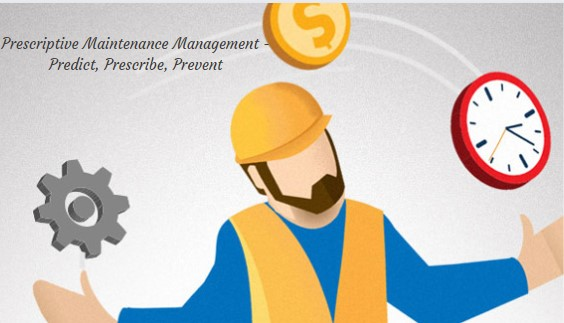
Prescriptive maintenance is best suited for organizations seeking the highest level of maintenance optimization and efficiency. By combining predictive analytics with prescriptive recommendations, this approach optimizes maintenance schedules and activities to minimize downtime and reduce costs. However, implementing prescriptive maintenance requires advanced data analytics capabilities and may be challenging without the appropriate technology infrastructure. Despite these challenges, the potential benefits of prescriptive maintenance in terms of improved reliability and cost savings make it an attractive option for organizations looking to optimize their maintenance operations.
How to Implement Maintenance Best Practices for Your Facilities
Step-by-Step Guide to Implementing Maintenance Best Practices
Implementing maintenance best practices is essential for ensuring the reliability, efficiency, and longevity of your facilities' assets. Here's a step-by-step guide to help you effectively implement these practices:
Identifying and Discovering Maintenance Best Practices
Begin by identifying and researching maintenance best practices relevant to your industry and specific operational needs. This may involve studying industry standards, consulting with experts, and analyzing case studies of successful maintenance programs. By understanding what constitutes best practices in maintenance, you can lay the groundwork for implementing them effectively in your facilities.
Developing Standards and Playbooks

Once you've identified the best practices, develop standards and playbooks outlining the procedures and protocols to be followed. These documents should detail the specific steps to be taken for various maintenance tasks, including preventive maintenance, reactive maintenance, and troubleshooting procedures. Standardizing maintenance processes ensures consistency, efficiency, and compliance with industry regulations.
Applying and Implementing Processes
Next, apply and implement the established maintenance processes in your facilities. This involves training maintenance personnel on the standardized procedures, providing them with the necessary tools and resources, and establishing clear communication channels for reporting and tracking maintenance activities. By effectively implementing maintenance processes, you can ensure that tasks are carried out efficiently and according to best practices.
Tracking Progress and Performance

Regularly monitor and track the progress and performance of your maintenance activities. Use key performance indicators (KPIs) such as equipment uptime, maintenance costs, and response times to gauge the effectiveness of your maintenance practices. Analyze data collected from maintenance activities to identify areas for improvement and optimize your maintenance processes continuously.
Enabling and Automating Maintenance Best Practices
Lastly, leverage technology and automation tools to enable and automate maintenance best practices. Implement preventive maintenance software, CMMS, and IoT devices to streamline maintenance workflows, schedule tasks, and monitor equipment health in real-time. By embracing technology, you can enhance the efficiency, accuracy, and effectiveness of your maintenance operations, leading to significant cost savings and improved asset performance.
By following this step-by-step guide, you can successfully implement maintenance best practices in your facilities, leading to optimized maintenance processes, reduced downtime, and improved overall operational performance.
Conclusion
Implementation of maintenance best practices is paramount for ensuring the smooth and efficient operation of industrial facilities. By adopting a proactive approach to maintenance, organizations can mitigate the risks associated with equipment failure, minimize costly downtime, and prolong the lifespan of critical assets. Throughout this guide, we have explored various strategies and techniques for implementing maintenance best practices effectively.
Firstly, we emphasized the importance of identifying and discovering maintenance best practices specific to each industry and operational context. By understanding the key principles and methodologies behind successful maintenance programs, organizations can establish a solid foundation for improvement.
Developing standards and playbooks was highlighted as the next crucial step. Standardizing maintenance procedures ensures consistency, efficiency, and compliance with industry regulations. Clear documentation of maintenance protocols facilitates training, enhances communication, and streamlines maintenance workflows.
Applying and implementing the established processes require commitment from all stakeholders. Through effective training, resource allocation, and communication channels, organizations can ensure that maintenance tasks are executed efficiently and in accordance with best practices.
Tracking progress and performance is essential for continuous improvement. By monitoring key performance indicators and analyzing maintenance data, organizations can identify areas for optimization and refine their maintenance practices accordingly.

Finally, enabling and automating maintenance best practices through technology is a game-changer. Utilizing preventive maintenance software, CMMS, and IoT devices streamlines maintenance workflows, enhances data accuracy, and enables real-time monitoring of equipment health.
In essence, the successful implementation of maintenance best practices requires a holistic approach that encompasses people, processes, and technology. By embracing continuous improvement and leveraging the latest advancements in maintenance technology, organizations can achieve significant cost savings, optimize asset performance, and maintain a competitive edge in today's rapidly evolving industrial landscape.